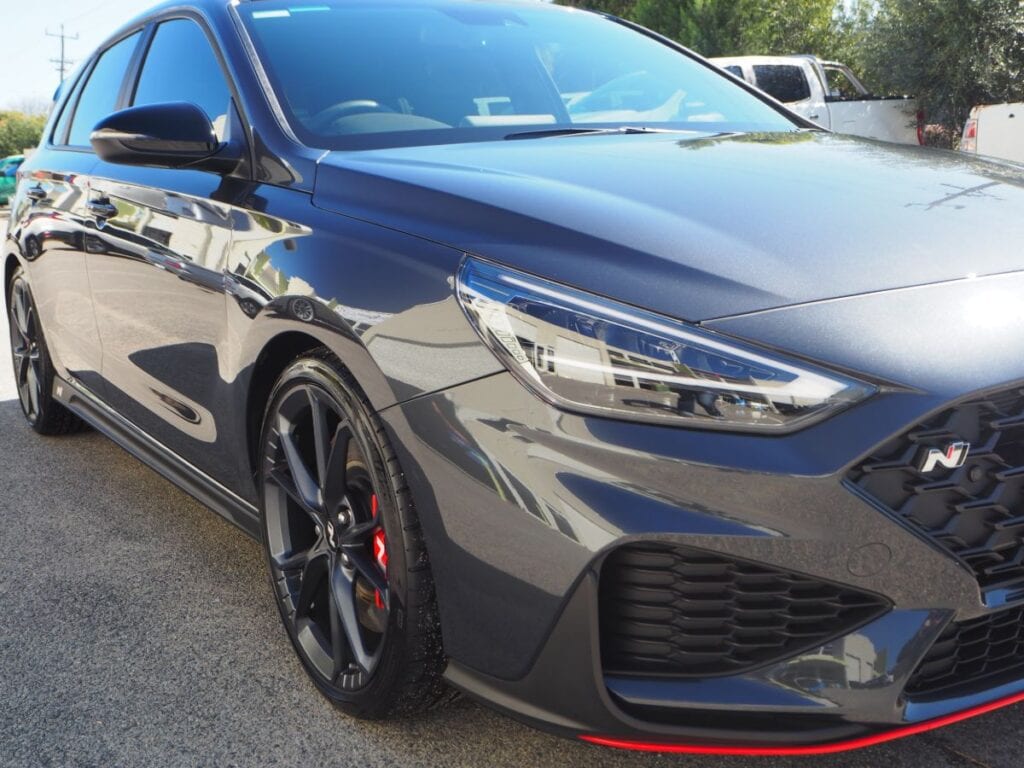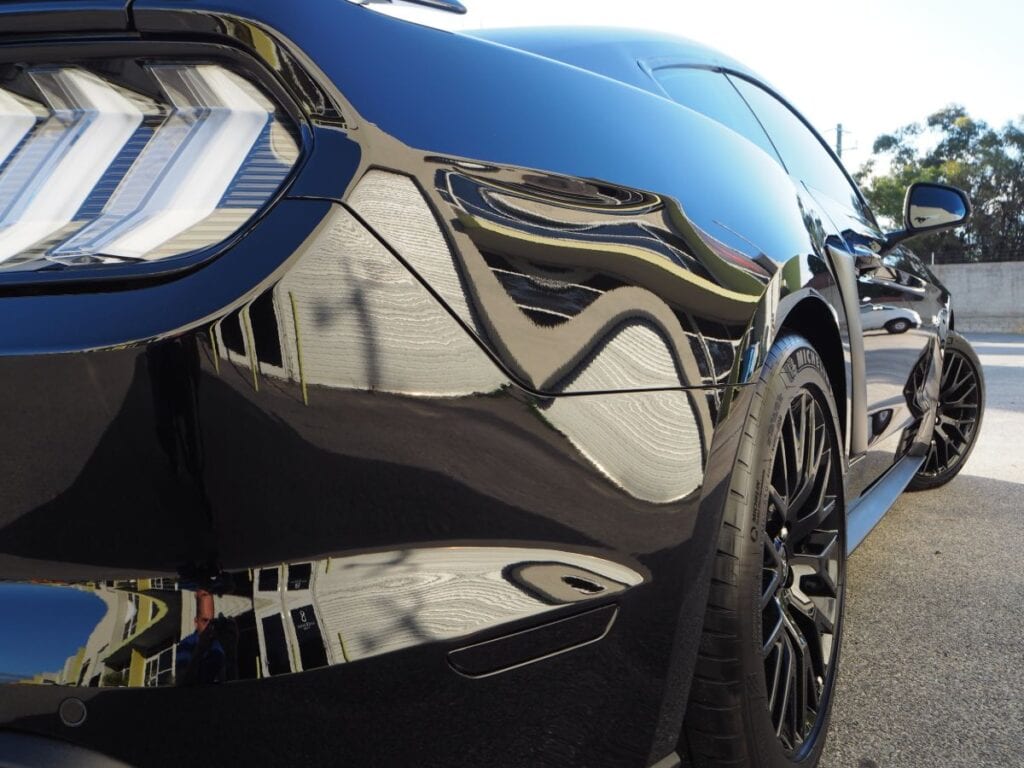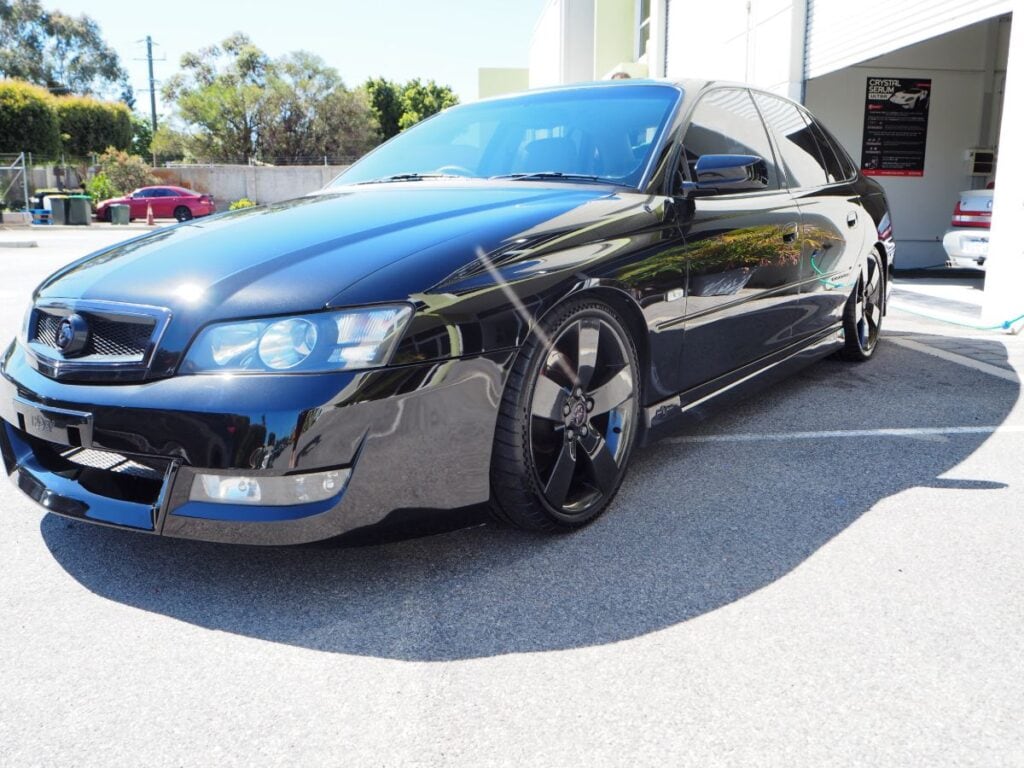Car Protection FAQs
Whether you’re looking to preserve the showroom shine of your new vehicle or extend the life of your car’s paint, understanding your options for paint protection is crucial. Here, we’ve compiled a comprehensive list of the most commonly asked questions about car paint protection. From exploring what paint protection actually does to comparing costs and benefits, you’ll find detailed answers that will help you make an informed decision.
Paint protection refers to a range of products and techniques used to safeguard the paint of a vehicle from damage caused by external elements such as dirt, debris, UV rays, and chemical contaminants. This protection helps to maintain the car’s aesthetic appearance and can also enhance its resale value by keeping the exterior in excellent condition.
Paint protection works by applying a clear, durable barrier over a car’s paint. This barrier shields against UV rays, dirt, and minor scratches, effectively preserving the vehicle’s appearance and preventing paint degradation.
Ceramic Coatings:
These are liquid polymers derived from ceramic nanoparticles, which are manually applied to the car’s exterior. Once cured, it creates a hard, protective layer over the paint that is hydrophobic (water-repellent), resistant to UV rays, scratches, chemicals, and extreme heat. The bond formed is semi-permanent, meaning it doesn’t wash away under normal conditions and doesn’t require repeated application every few months.
Paint Protection Films (PPF):
Also known as “clear bra”, PPF is a thermoplastic urethane film applied to the painted surfaces of a car. This film offers a physical barrier that protects the paint from scratches, stone chips, and contaminants. It is highly resistant to corrosion and acidic contaminants, ensuring that the paint doesn’t get damaged by chemical stains or etching.
Wax and Sealants:
These are more traditional methods of paint protection. Waxes provide a warm shine and fill in small scratches, though they usually only last a few months. Sealants are synthetic products that provide a harder, more protective layer than waxes and can last from six months to a year. Both waxes and sealants work by creating a sacrificial layer on top of the paint that can absorb stains and minor scratches, preventing damage to the actual paint beneath.
To protect your car from sun damage and keep it looking new, applying paint protection is one of the most effective methods. Here’s a focused guide on how to do it:
Choose Your Paint Protection
Select from paint protection films, ceramic coatings, or traditional waxes. Paint protection films and ceramic coatings offer long-lasting, durable protection against UV rays, while waxes need more frequent application but also provide a good level of shine and protection.
Professional Application
Consider having paint protection professionally applied. Professionals can ensure that films and coatings are applied evenly without bubbles or missed spots, which is crucial for maximum protection.
Maintenance
Clean your car regularly to remove dirt and residues that can reduce the effectiveness of paint protection layers.
By focusing on proper application and maintenance of paint protection, you can significantly extend the life of your car’s paintwork and protect it from the harsh effects of UV sunlight.
No, paint protection does not affect the colour or finish of the car’s paint. Instead, it preserves the original appearance by providing a clear, protective layer over the paint. In fact, certain types of paint protection like ceramic coatings can enhance the paint’s gloss, making the car look even more vibrant without altering the actual colour.
Yes, paint protection can be applied to both used and old cars. Applying paint protection like ceramic coatings, paint protection films, or even traditional waxes can be a great way to rejuvenate the appearance of an older vehicle and protect it from further wear and tear. It helps in maintaining the paint’s condition, reducing the visibility of existing imperfections, and preventing new damage from environmental exposure and everyday use. Before application, it’s important to thoroughly clean and possibly correct the paint to ensure the protective layer adheres well. and operates effectively.
The longevity of car paint protection depends on the type of product used and the conditions to which the vehicle is exposed. Here’s a general guideline:
-
Ceramic Coatings: These can last between 2 to 5 years, sometimes even longer, depending on the quality of the coating and maintenance.
-
Paint Protection Film (PPF): Typically lasts about 5 to 7 years. High-quality films might last up to 10 years with proper care.
-
Waxes and Sealants: Waxes generally need reapplication every few months, whereas sealants can last from 6 months to a year.
Applying paint protection to your car offers several key benefits that help preserve the vehicle’s appearance and functionality. Here are the main advantages:
-
Enhanced Durability: Paint protection provides a strong barrier against external factors such as UV rays, road salt, bird droppings, and tree sap, which can cause fading, discoloration, and chemical etching.
-
Scratch Resistance: Certain types of paint protection, like ceramic coatings and paint protection films (PPF), offer a degree of resistance against minor scratches and swirl marks from dirt and cleaning.
-
Ease of Cleaning: The hydrophobic properties of many paint protection options mean that water beads up and rolls off the surface, taking dirt and grime with it, which makes washing the car easier and less frequent.
-
Improved Aesthetics: Paint protection can enhance the paint’s gloss and overall visual appeal, making colors appear more vibrant and the finish glossier.
-
Increased Resale Value: By maintaining the car’s exterior condition, paint protection can help retain its value over time, making it more appealing to potential buyers.
Whether you can apply car paint protection yourself or should hire a professional depends on the type of protection you choose:
-
Waxes and Sealants: These are generally straightforward to apply, and many car owners can do this themselves with basic tools and following the manufacturer’s instructions.
-
Ceramic Coatings: While it’s possible to apply ceramic coatings yourself, the process requires meticulous preparation and application to avoid streaks and ensure even coverage. Professional application is recommended to achieve the best results and to avoid the risk of damaging the paint during application.
-
Paint Protection Film (PPF): This is best left to professionals. PPF installation requires specific skills, tools, and experience to ensure that the film is applied smoothly and without bubbles or wrinkles, which can be challenging for amateurs.
Yes, paint protection can typically be removed and re-applied. Depending on the type of protection applied (e.g., ceramic coating, paint protection film, waxes or a sealant), methods vary, but professional services can safely remove old protection and reapply new protection to keep your paint looking fresh and protected.
“Our clients trust us with one of their most valuable assets, and we don’t take that for granted.”









Trust your car with Perth’s finest.
We care for your car as if it were our own, only using a range of superior professional grade products and expert application techniques.


